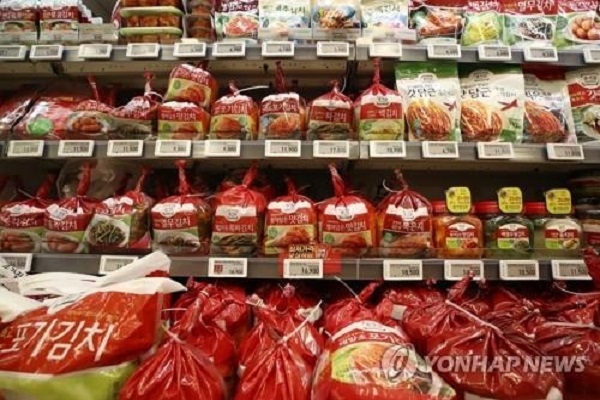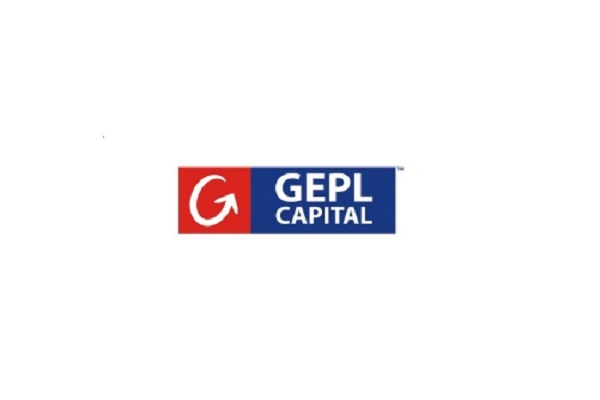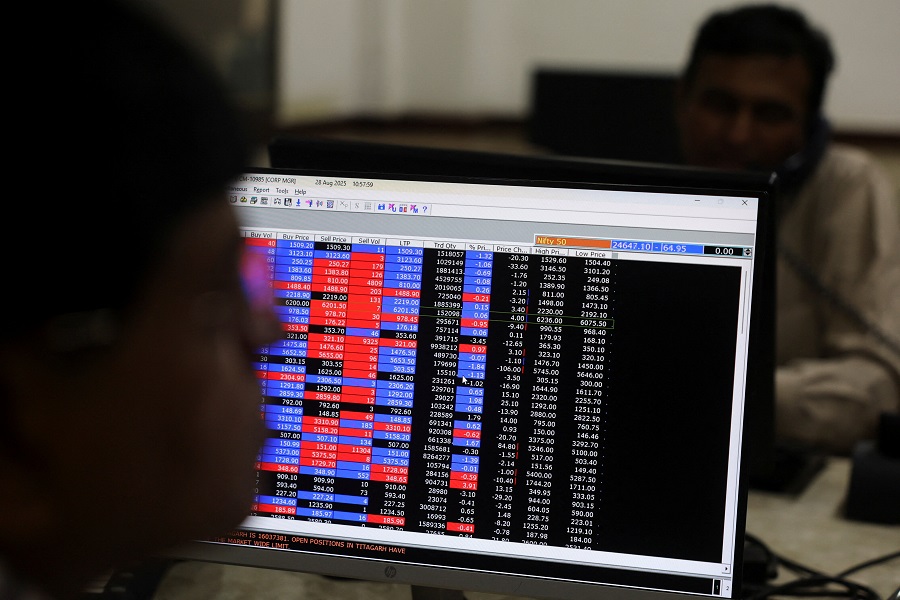Monthly Debt Market Update, September 2023: CareEdge Ratings

Global Overview
US
• The 10-year US Treasury yield retreated from multi-year highs seen over the past month after easing inflation, downward revision of Q2 GDP and rising unemployment lowered bets of a potential Fed rate hike at the September meeting. More notably, bond markets ignored hawkish comments by Fed Chair Jerome Powell at the Jackson Hole Symposium. Despite noting that progress on inflation has been made, Powell indicated that further rate increases were still on the table. • On the data front, there was a downward revision of Q2 GDP to 2.1% from the initial reading of 2.4%. While US nonfarm payrolls surpassed expectations with 187,000 jobs added in August compared to the forecast of 170,000, it's noteworthy that payrolls have been consistently revised lower every month in 2023. Job openings also declined, hitting a two-year low at 8.82 million in August, falling short of the forecasted 9.46 million. However, the increase in the unemployment rate to 3.8% in August carries a silver lining as it reflects the entry of 736,000 people into the workforce. Consequently, the participation rate climbed to pre-pandemic levels of 62.8%. Meanwhile, wage growth moderated to 4.3% year-on-year in August, down from 4.4% the previous month, although it remains faster than the 3.5% pace associated with the Fed's 2% inflation target. Regarding price pressures, both headline and core Consumer Price Index (CPI) figures moderated below market expectations. In summary, both inflation and the labour market have displayed signs of gradual cooling, which supports the case for a pause in interest rates in September.
• We believe the Fed could keep rates on hold at its September FOMC meeting and continue to adopt a datadependent approach. Latest growth and jobs data suggest that it would take a deeper slowdown to get inflation back to the 2% target, with a still tight labour market contributing to core inflation remaining above 4%. Futures markets indicate the possibility of a pause in September and a close call of rate action in November instead. That said, the Fed’s dot plot and projections at the September meeting will show just what the central bank perceives of the state of the economy, providing direction to yields. Every incoming data which shows that the economy is doing well will continue to price in another rate hike in November. As a result, yields could remain biased to the upside.
Europe (ex-UK)
• Hawkish comments by the European Central Bank (ECB) officials amidst still-elevated inflation saw European bond yields move higher through the month. ECB reiterated its expectations of inflation remaining too high for too long, leaving the door open to further tightening amidst growing risks of a recession.
• ECB President Christine Lagarde stated that the fight against inflation is still not over, adding that interest rates will need to stay high ‘as long as necessary’ to bring inflation to the 2% target. At the July ECB policy meeting as well, Lagarde stated that external sources of inflation had taken a backseat, with domestic price pressures, from rising wages and still robust profit margins, becoming an increasingly important driver of inflation. ECB’s Chief Economist Philip Lane also expressed cautious optimism over the recent moderation in inflation (which is still above the 2% target), amidst uncertainty over oil and gas prices and impending second-round effects of wage increases on inflation.
• On the data front, CPI remained sticky at 5.3% y-o-y in July (vs 5.1% expected), even as core inflation moderated to 5.3% (from 5.5% prior). The ECB's Consumer Expectations Survey showed inflation expectations three years ahead rising to 2.4% in July from 2.3% in June, above the ECB's 2% target. Moreover, consumers’ growth expectations for the next 12 months were lowered to -0.7% from -0.6%. Amongst other high-frequency indicators, industrial production contracted 2.2% in May, below market expectations of a 1.2% decline. While the German economy stagnated in Q2, contracting industrial production, exports and retail sales have raised the risk of the region’s major economy falling into recession.
• European yields could see some further upside in the run-up to the September meeting, especially if interim labour market and inflation data surprises on the upside. Although markets currently expect a 25bps hike in September to be a close call, the futures market shows a 40% chance of one more 25bps hike in November. Bond yields will also take direction from ECB revision, if any, of inflation and growth forecasts that will be released alongside the September meeting. As per ECB’s June forecasts, real GDP growth and average inflation for 2023 are seen at 0.9% and 5.4%, respectively.
UK
• The 10-year yield rose to a 15-year high of 4.75% as better-than-expected GDP, healthy labour market data and sticky core inflation reinforced bets that the Bank of England could raise rates by another 50bps in the remainder of the year.
• While CPI inflation moderated 100 bps to 6.9% y-o-y in July, core CPI remained stubborn at 6.9% y-o-y, reflecting the impact of a strong labour market. The latest release is encouraging given that BoE expects CPI inflation to average 6.9% in Q3 owing to wholesale energy price developments. GDP growth of 0.2% q-o-q in Q2 was better than market expectations of stagnant economic activity. Meanwhile, the labour market showed mixed signs amidst improving wage growth (7.8% y-o-y in June vs. 7.4% expected), and an increase in number of unemployed persons (29K in June vs. forecasts of a 7K decline).
• With another rate hike on the cards in September, we believe UK gilt yields could move higher from current levels in the near term. However, the central bank is likely to remain watchful of the progress of services inflation that has not seen a similar moderation as in the case of headline prints. Moreover, resurfacing evidence of slack in economic activity, evident from declining retail sales and slowing momentum in PMI data in July, is expected to keep the upside in bond yield limited.
Japan
• The 10-year Japanese government bond yield rose to a 9-year high last month following the Bank of Japan’s policy tweak. In an unexpected move, BoJ said it would buy the 10-year JGB at 1% in fixed-rate operations, essentially widening the trading band on long-term yields. BoJ has however been active in intervening via bond purchases to curb advances to 1%. The central banks’ move to allow yields to move more freely, even while retaining the 0.5% cap on yield as a reference, has raised speculation that this might be the beginning of a shift from its loose monetary policy.
• GDP growth, inflation, and wages rose more than expected, supporting the narrative of a policy shift. Q2 GDP growth accelerated 6% y-o-y (vs 3.1% expected) aided by higher exports, while headline inflation rose 3.3% y-o-y (vs 2.5% expected) in July even as core inflation eased slightly. BoJ’s upward revised forecasts for inflation, particularly that of core CPI also indicate that underlying price pressures could remain persistent, especially as wages have been consistently beating expectations. Wages grew 2.3% in June against forecasts of 1.6%.
• Japanese bond yields could potentially move higher from current levels if the narrative of elevated inflation and robust wages grows stronger. Currently, BoJ is preventing the 10-year yield from crossing 0.66% levels, but with sustained evidence of healthy economic performance, the central bank could allow the yield to move higher to 0.8% in the coming months. Bond markets also remain watchful of whether BoJ decides to pare its bond-buying operations, clarity on which would be seen when the Ministry of Finance announces its purchase amounts for the Oct-Dec period on September 29.
India Overview
• The 10-year bond yield rose around 8 bps to as high as 7.25% in the month, its highest level since March, in response to higher than expected inflation prints. The shorter end of the curve however rose at a faster pace (1-year bond yield surged 20 bps) as liquidity conditions tightened.
• Headline inflation breached RBI’s target range for the first time since February 2023, rising 7.4% in July, from 4.9% in the previous month. The rise marked the highest reading observed since the peak in April 2022 at 7.8%. The upside was largely on account of a spike in food inflation, particularly that of vegetables, which were impacted by factors such as high temperatures and erratic rains. While we believe the rise in vegetable prices is transient, inflation in other food categories such as cereals, pulses and milk has also remained elevated, which is concerning. The government’s supply-driven measures at this juncture will nonetheless contribute to taming price pressures to some extent. We have thus revised our average inflation forecast for FY24 higher to 5.6% from our previous estimate of 5.1%. We expect headline CPI to average 7% in Q2 FY24. We expect CPI inflation to moderate to 5.8% and 5.2% in Q3 FY24 and Q4 FY24 respectively. Going ahead, rainfall patterns over the coming weeks could test the vulnerability of both Kharif and Rabi crop output. This poses a risk for food inflation in the coming months
. • On the liquidity front, RBI’s implementation of incremental cash reserve ratio (I-CRR) helped tackle the liquidity deluge seen in the past few months. RBI stated in its latest monetary policy that all scheduled banks are required to maintain an additional cash reserve ratio amounting to 10% of the increase in their net demand and time liabilities (NDTL) between May 19, 2023, and July 28, 2023. The move comes against the backdrop of large deposit inflows as a result of withdrawing Rs 2000 banknotes from circulation. According to RBI, Rs 3.32 lakh crore or 93% of Rs 2000 banknotes have been received back from circulation up to August 31. Out of this, 87% has been in the form of deposits. Surplus liquidity also shrank in the month following RBI’s variable rate reverse repo auctions worth over Rs 56,000 crore and GST outflows. Moreover, RBI’s likely intervention via dollar selling to defend rupee's weakness also contributed to the tightening of rupee liquidity conditions. Average liquidity stood at Rs 1.1 lakh crore in August, compared to Rs 1.7 lakh crore in the previous month. As a result, overnight call rates remained well above the repo rate in the second half of the month. Going ahead, liquidity could remain in surplus on account of healthy government spending and redemption of Rs 2.8 lakh crore worth of government securities in H2 FY24. Given ongoing inflation concerns, the RBI would prefer to maintain just enough liquidity to meet credit demand ahead of the upcoming festive period. As a result, the central bank in its review of I-CRR, decided to discontinue the temporary measure, but in a phased manner.
• The borrowing calendar for H2 FY24 to be announced by end-September would be a key event for yields going ahead. As per the current schedule, 42% of the gross borrowing of Rs 15.43 lakh crore for FY24, is due to be borrowed in the October-March period.
• On the policy front, we expect RBI to maintain the status quo in FY24, with the likelihood of rate cuts beginning next fiscal year. We expect the 10-year benchmark bond yield to trade within 7-7.2% by the end of FY24. In the near term, there could be an upward bias on the yields on account of inflation concerns.
To Read Complete Report & Disclaimer Click Here
Above views are of the author and not of the website kindly read disclaimer









.jpg)






